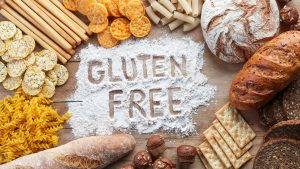When you walk into a supermarket and see so many options, it can be overwhelming to decide what to buy. At that moment, checking food labels to find the most nutritious choice might feel like too much effort.
However, being a mindful shopper is important to ensure you and your family enjoy the most nourishing foods. To make your food shopping easier, here’s a simple label-reading guide to help you make healthier choices at the supermarket.
Step 1: Check Front of Pack Claims
Food manufacturers often use appealing terms such as ‘low in sugar’, ‘low in salt’, or ‘97% fat free’. These claims are regulated and must meet specific criteria. For example, a ‘low sugar’ product must contain no more than 5g of sugar per 100g, a ‘low salt’ product must have no more than 120mg of sodium per 100g, and a product that is ‘97% fat free’ can contain no more than 3% fat. You can confirm these claims by checking the nutrition information panel on the packaging.
Step 2: Look at the Ingredients List
Ingredients are listed in descending order by weight, from the largest to the smallest. If sugar, fat, or refined flour appear among the first three ingredients, the product is unlikely to be a nutritious choice, as seen in pastries, biscuits, and snack foods. These ingredients may also appear under different names, as shown below.
If an ingredient is mentioned on the front of the packaging or as part of the brand name, its percentage must be listed in the ingredients section. For example, some fruit drinks contain as little as 5% real fruit and list sugar higher in the ingredients list. The key takeaway: the fewer ingredients a food product has, the more natural and generally healthier it is likely to be.

| SALT IN DISGUISE |
| Kosher salt Vegetable salt Sea salt Sodium bicarbonate Monosodium glutamate (MSG) Stock Soy sauce |
Step 3: Compare Nutrition Panels
At the top of the nutrition panel, you’ll find the serving size, which is determined by the manufacturer. This must be clearly defined (for example, 30g or ½ cup), along with the total number of servings in the package.
The ‘per serve’ column helps estimate how much of a nutrient you consume in one serving, such as sugar, fat, fibre, sodium or kilojoules (calories). This can guide how much of the product you choose to eat.
The ‘per 100g’ column is the most useful when comparing products, as serving sizes differ between brands. Using the 100g values allows you to accurately compare similar items — for instance, which cereal has the least sugar and the most fibre, or which stock has the lowest sodium.

| Easy health guidelines to aim for: Less than 15g sugar per 100g Less than 10g fat per 100g Less than 120mg sodium per 100g (up to 400mg per 100g is acceptable if lower options are not available) |



